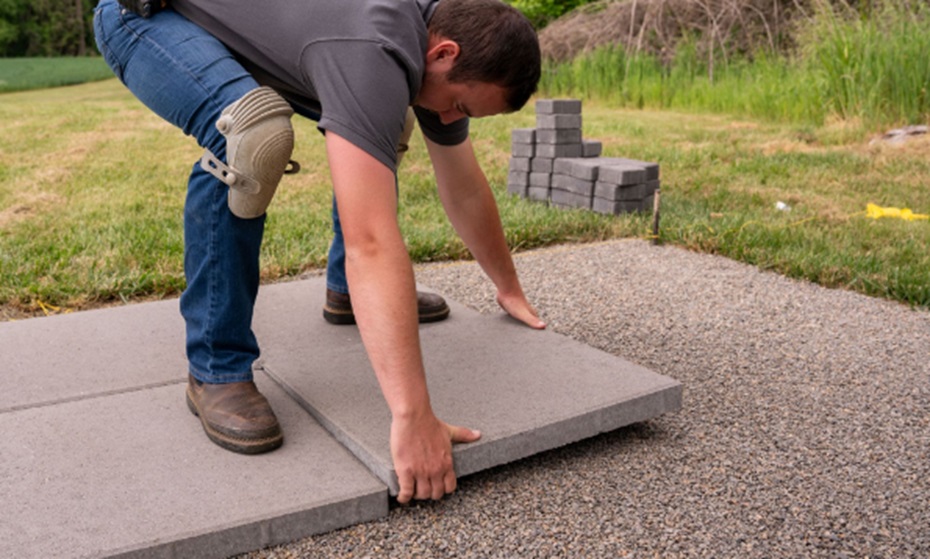
Laying pavers is a rewarding DIY project that can enhance the beauty and functionality of your outdoor space. Whether you’re creating a patio, walkway, or driveway, achieving professional results requires careful planning, attention to detail, and the right techniques. In this blog post, we’ll discuss the essential steps and tips for pavers like a pro, ensuring smooth surfaces and stunning results.
- Planning and Preparation
Before you start pavers, it’s crucial to plan out your project and prepare the area properly. Begin by determining the layout and design of your paved area, taking into account factors such as the shape, size, and pattern of the pavers. Use stakes, string lines, and marking paint to outline the area and establish straight lines and square corners.
Next, prepare the base for your pavers by excavating the area to the desired depth. The depth of excavation will depend on the thickness of your pavers and the type of base material you’ll be using. Typically, a depth of 4 to 6 inches is sufficient for most residential paving projects. Remove any rocks, roots, or debris from the excavated area, and compact the soil to create a stable base.
- Choosing the Right Base Material
The base material is a critical component of a successful paver installation. It provides stability, support, and drainage for the pavers, ensuring that they remain level and securely in place over time. Common base materials for laying pavers include crushed stone, gravel, and sand.
For most applications, a base of crushed stone or gravel is recommended. This material provides excellent drainage and stability and helps prevent settling or shifting of the pavers. Once the base material is in place, use a plate compactor to compact it thoroughly and create a firm, level surface for the pavers.
- Installing Edge Restraints
Edge restraints are essential for keeping your pavers in place and preventing them from shifting or spreading over time. There are several options for edge restraints, including plastic or metal paver edging, concrete curbing, or even landscape timbers.
Install the edge restraints along the perimeter of your paved area, securing them firmly into the ground with stakes or anchors. Make sure the edge restraints are level and flush with the surface of the pavers to provide a clean, professional finish.
- Laying the Pavers
With the base material and edge restraints in place, it’s time to start laying the pavers. Begin in one corner of the paved area and work your way outward, placing each paver in the desired pattern or arrangement. Use a rubber mallet to tap each paver into place, ensuring that they are level and evenly spaced.
As you lay the pavers, periodically check for levelness and adjust as needed by adding or removing base material underneath. Pay close attention to the alignment of the pavers, especially along straight edges and corners, to ensure a neat and uniform appearance.
- Cutting Pavers to Fit
Inevitably, you’ll encounter areas where full-sized pavers won’t fit, such as along edges, curves, or obstacles. In these cases, you’ll need to cut the pavers to fit using a paver saw or chisel. Measure and mark the pavers carefully before cutting, and use safety goggles and gloves to protect yourself during the cutting process.
- Filling the Joints
Once all the pavers are in place, it’s time to fill the joints between them with jointing sand or polymeric sand. Spread the sand evenly over the surface of the pavers, using a broom or brush to sweep it into the joints. Be sure to fill the joints completely to prevent weeds from growing between the pavers and to provide additional stability.
- Compact and Seal
Finally, use a plate compactor to compact the pavers and settle them into place. This step helps ensure that the pavers are firmly set and helps to lock the jointing sand in place. Once the pavers are compacted, consider applying a sealant to protect them from stains, fading, and weather damage, and to enhance their colour and appearance.
- Regular Maintenance
To keep your newly paved surface looking its best, it’s essential to perform regular maintenance. Sweep the pavers regularly to remove dirt, leaves, and debris, and clean them periodically with water and mild detergent to remove stains and grime. Reapply jointing sand or mortar as needed to maintain stability and prevent weed growth between the pavers.
- Enjoy Your New Outdoor Space
With your pavers properly installed and maintained, all that’s left to do is sit back, relax, and enjoy your newly transformed outdoor space. Whether you’re hosting outdoor gatherings, enjoying quiet evenings al fresco, or simply admiring the beauty of your landscape, your professionally laid pavers will provide years of enjoyment and satisfaction.
Conclusion
With proper planning, preparation, and execution, laying pavers can be a rewarding and satisfying DIY project. By following the steps outlined in this blog post and paying attention to detail, you can achieve professional results and create beautiful, durable outdoor surfaces that will enhance your home’s curb appeal and provide years of enjoyment. So, roll up your sleeves, gather your materials, and get ready to pave the way to smooth surfaces ahead!
